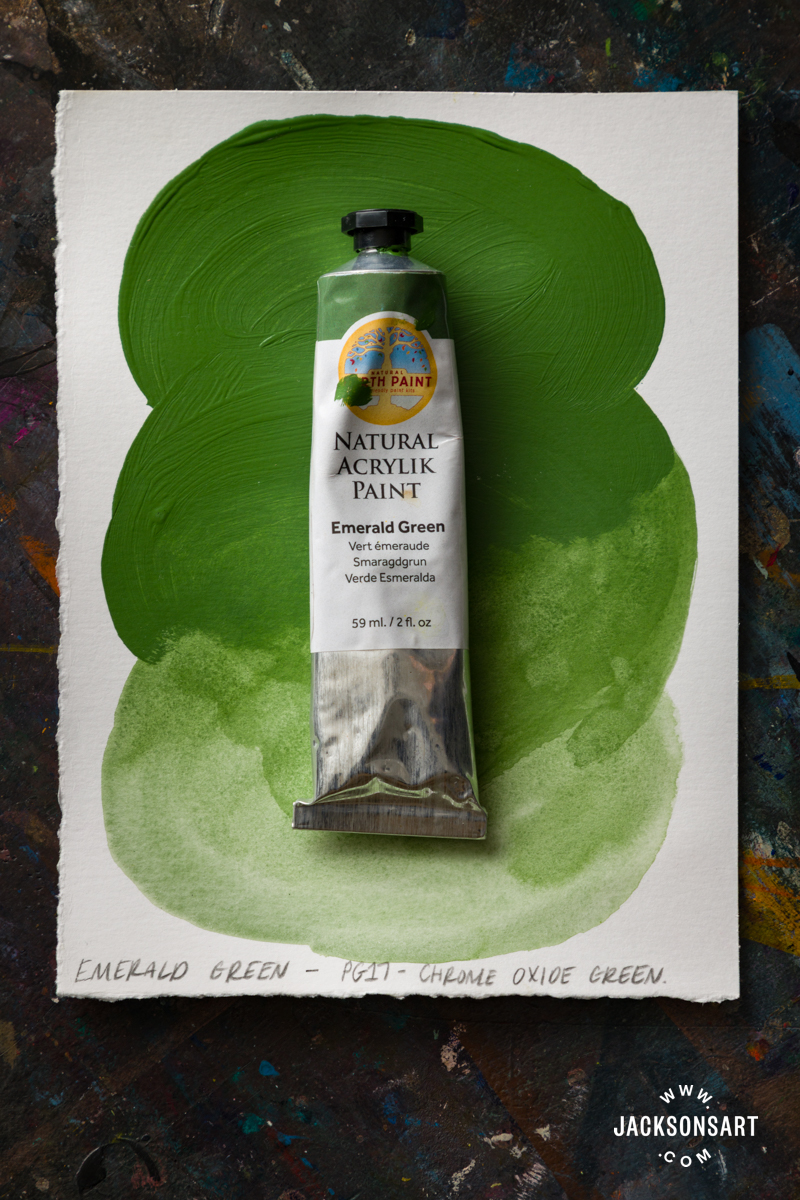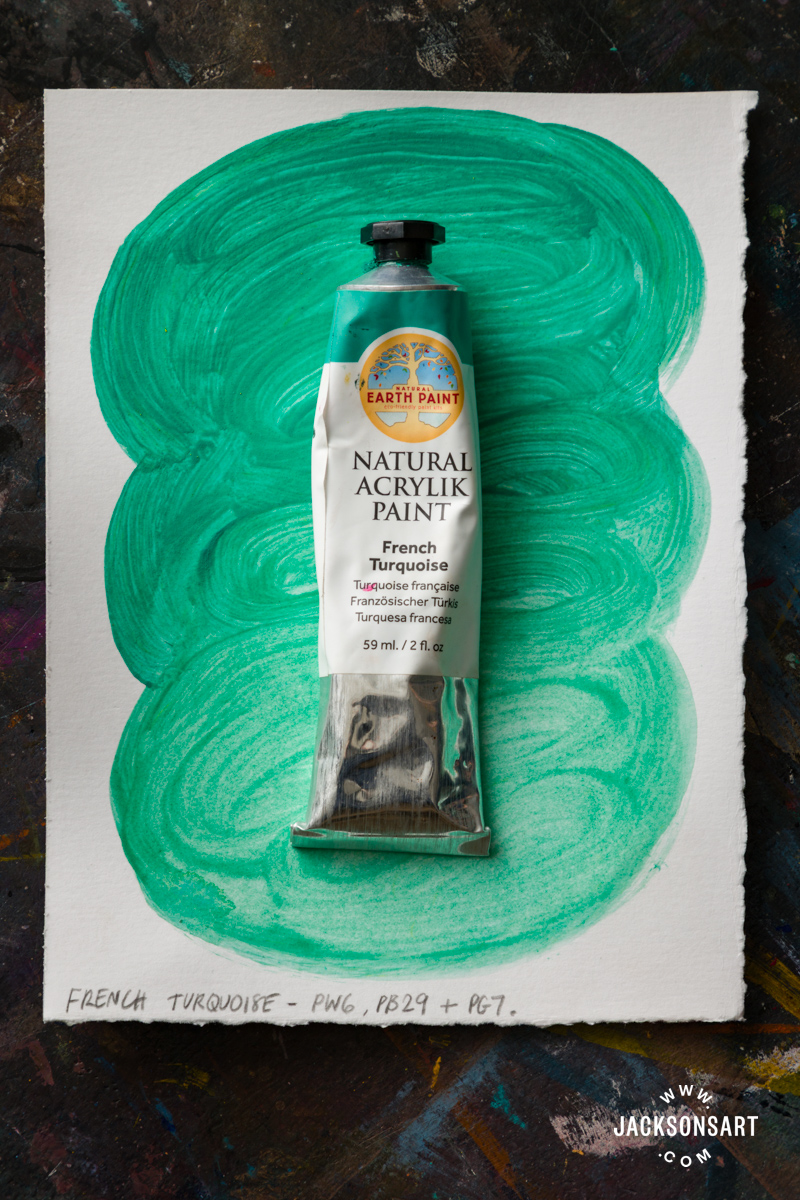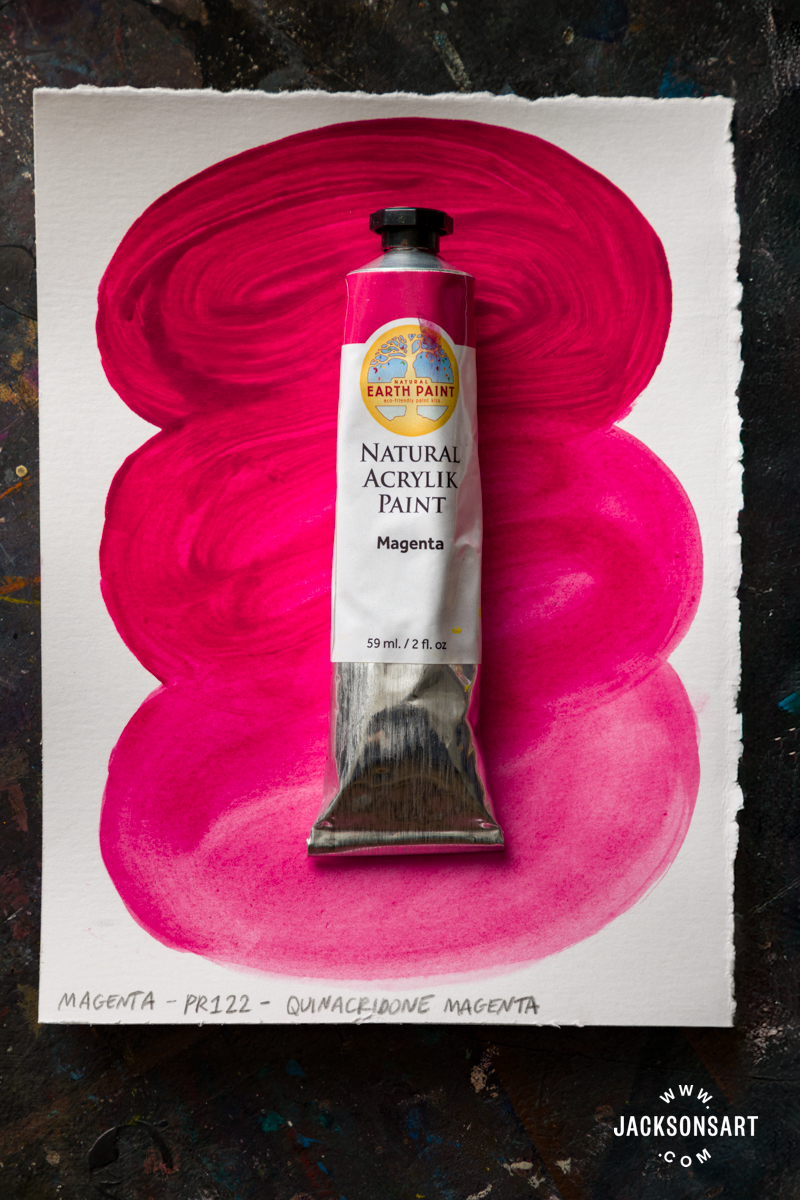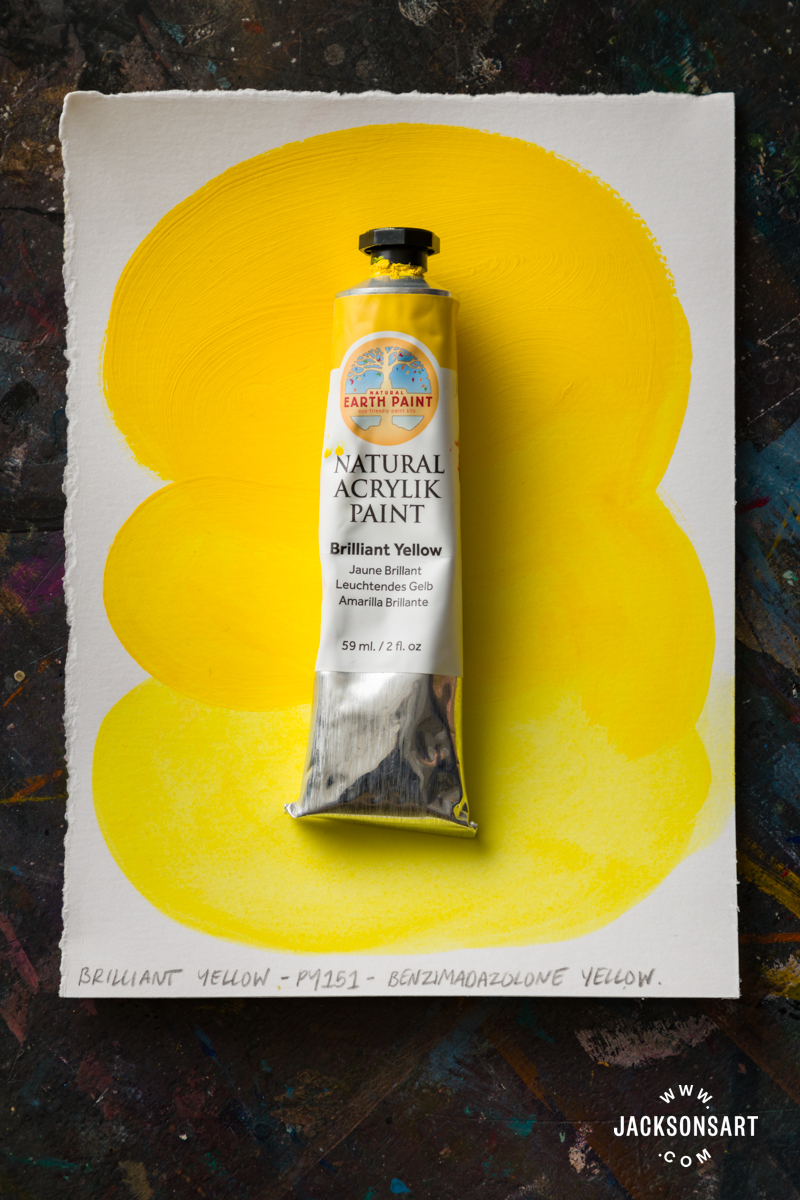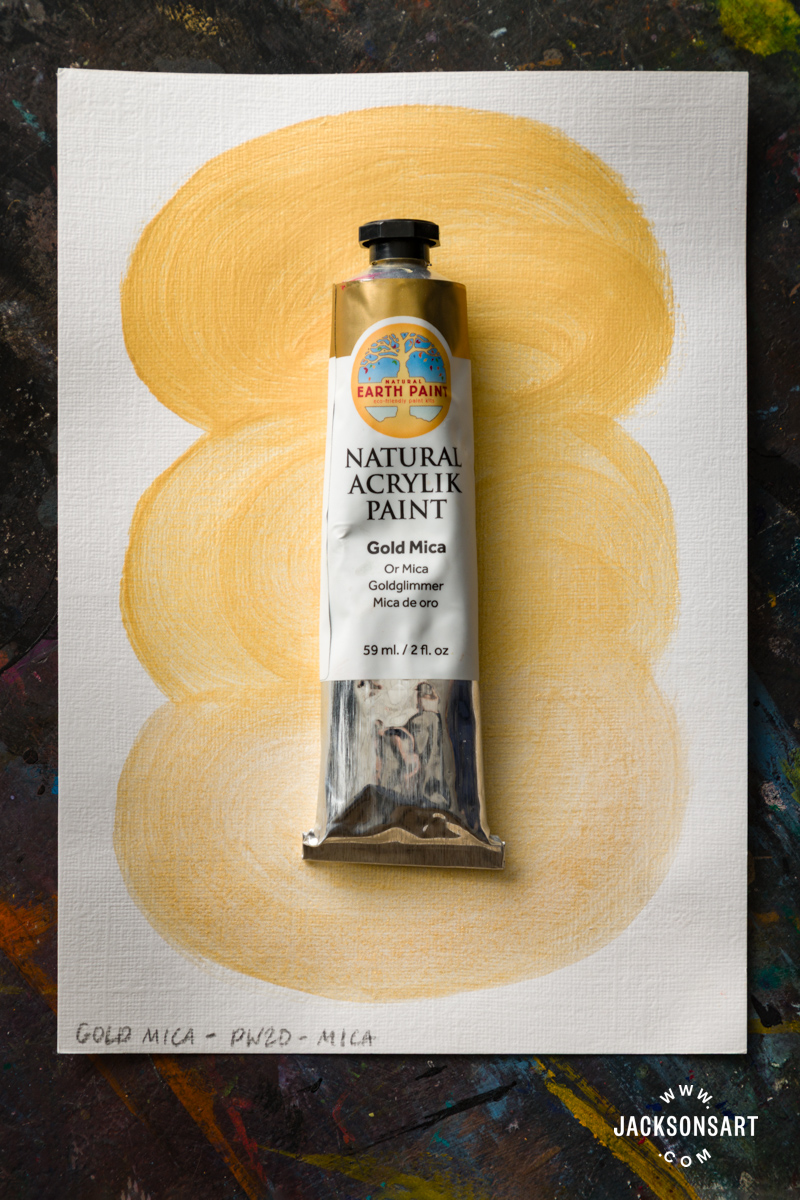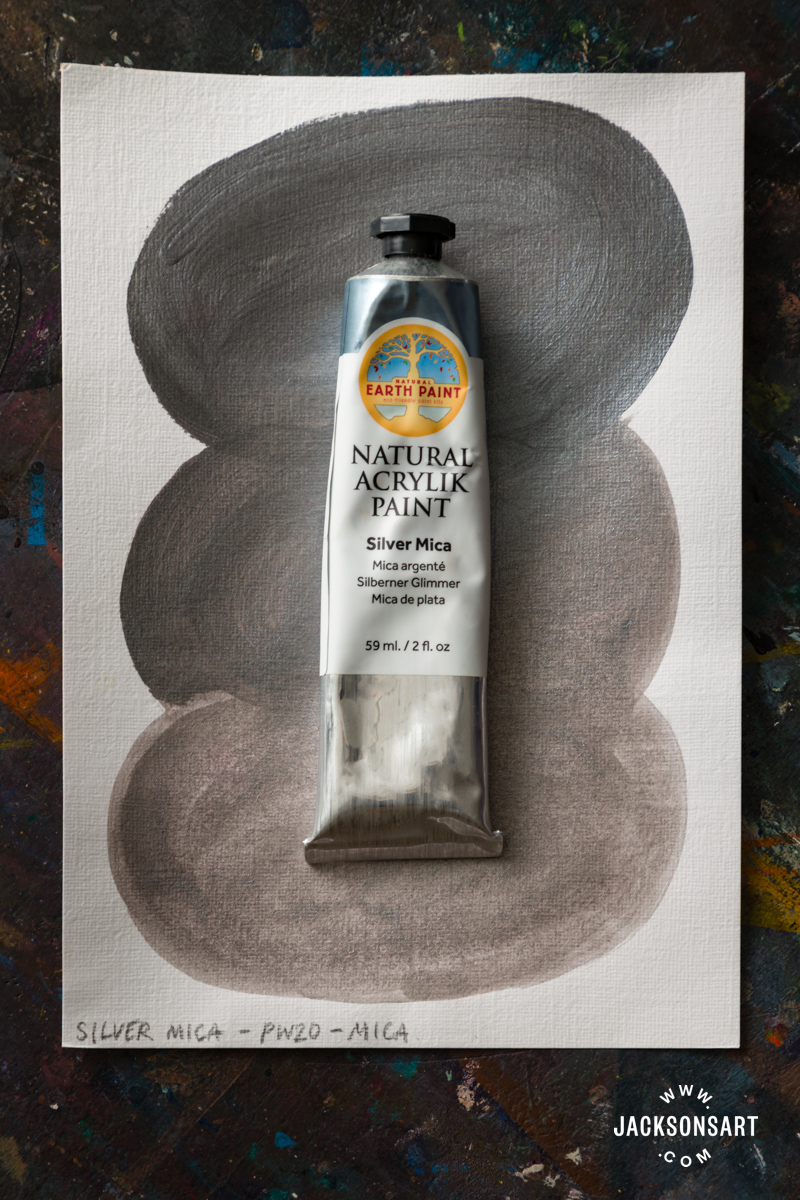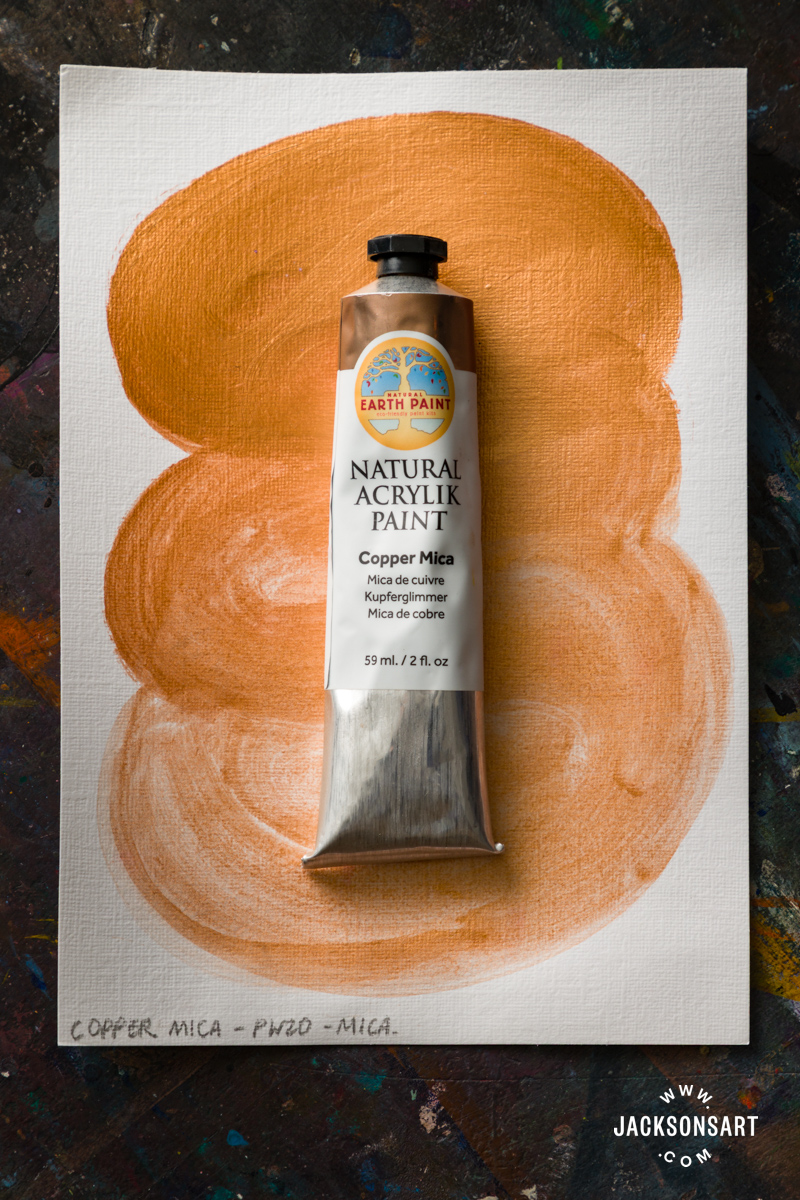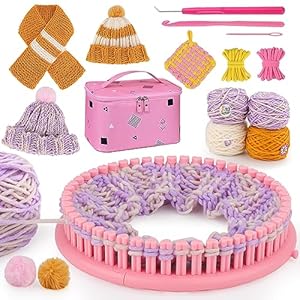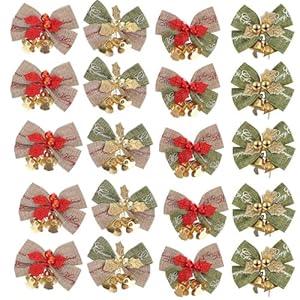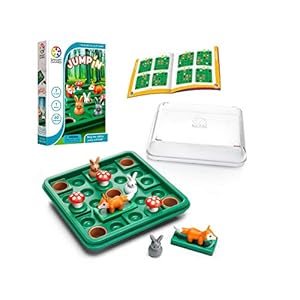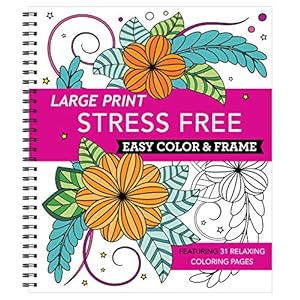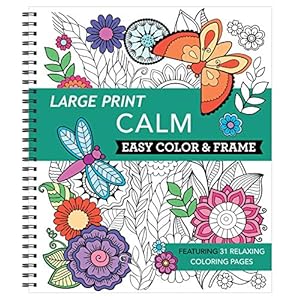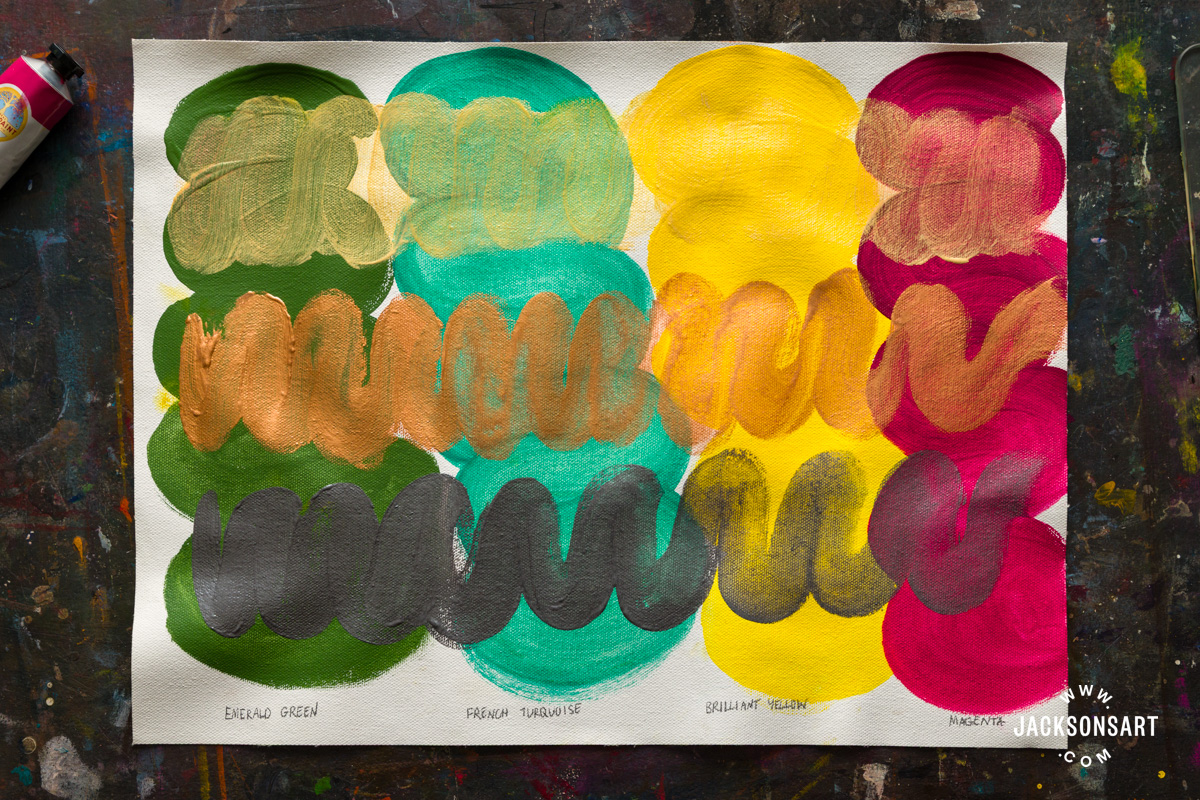
The Natural Earth Paint company’s mission is to produce quality art materials that are archival, non-toxic, plant-based, and eco-friendly, and are safe for kids to use. Their Acrylik Paint range embodies all of these qualities, claiming to be the world’s first paint that behaves like a typical acrylic, that’s also completely safe for the user and the planet. In this article, I’ll delve into the details of their key differences, and test seven colours from their range, including three metallics.

Testing Natural Earth Paint’s Acrylik Range
The Differences Between Acrylic Paints and Acrylik Paints
It’s easy to assume that acrylic paints don’t give off fumes because they’re applied with water and often don’t have a distinct smell, but this isn’t true. As they dry, they emit VOCs (Volatile Organic Compounds), which vary depending on the paint. Some of these include substances like formaldehyde, ammonia, and benzene. These are from the additives that are added to paints to perform functions like extending their shelf life, preventing mould, and manipulating their consistency. Some people are more sensitive to this outgassing than others, especially those with specific allergies. It’s definitely possible to make acrylic painting safe with proper ventilation and avoiding contact with the skin, but the Natural Earth Paint Acrylik Paints eliminate these concerns completely. They don’t contain any of these harmful additives, so they give both artists and kids the confidence to use them freely.
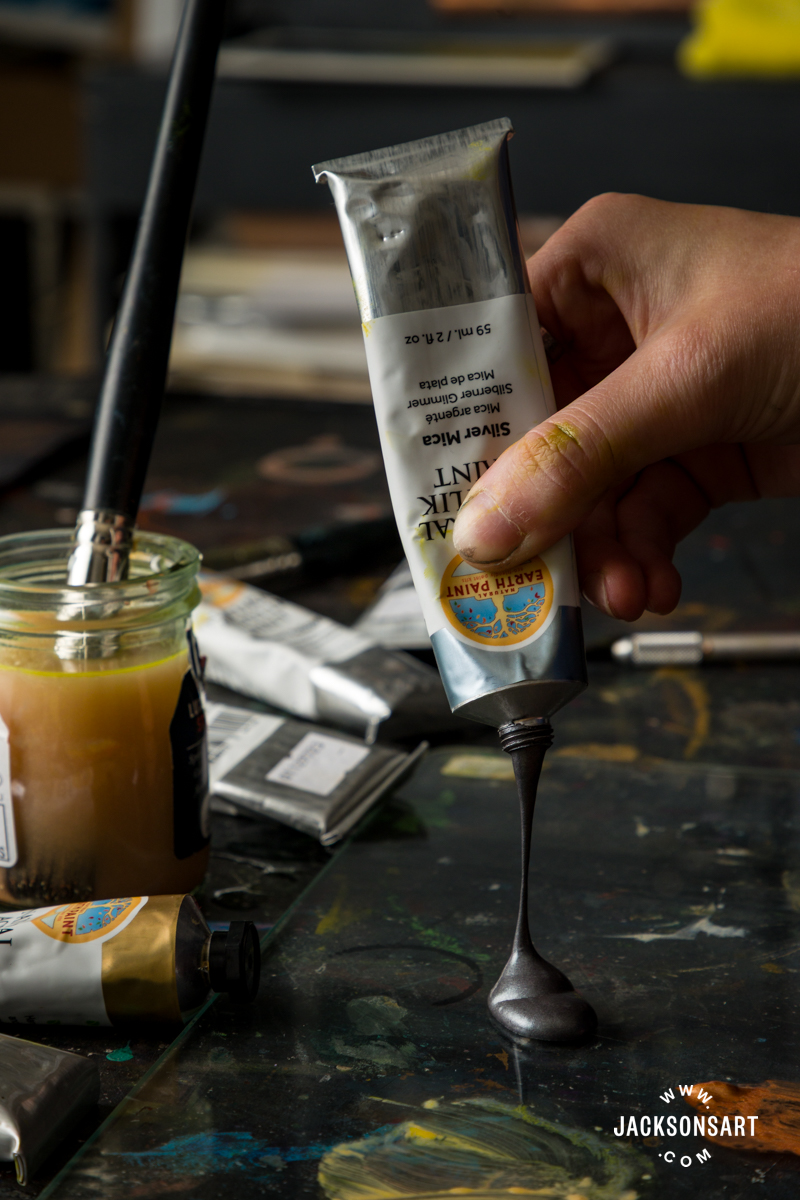
Traditional acrylic paints contain pigments that are suspended in an acrylic polymer emulsion, which derives from petroleum. This is the plastic part of acrylic paints, which contributes to microplastic pollution in our waterways when they’re emptied down the drain. Although the global effect of acrylic painting is nominally extremely small compared to the pollution created by other industries, some painters may wish to remove their impact altogether. The Natural Earth Paint Acrylik Paints are not petroleum-based, and contain no plastics, making them safe to rinse down the drain. The company states that the paint will be safely filtered from water systems, without polluting them.
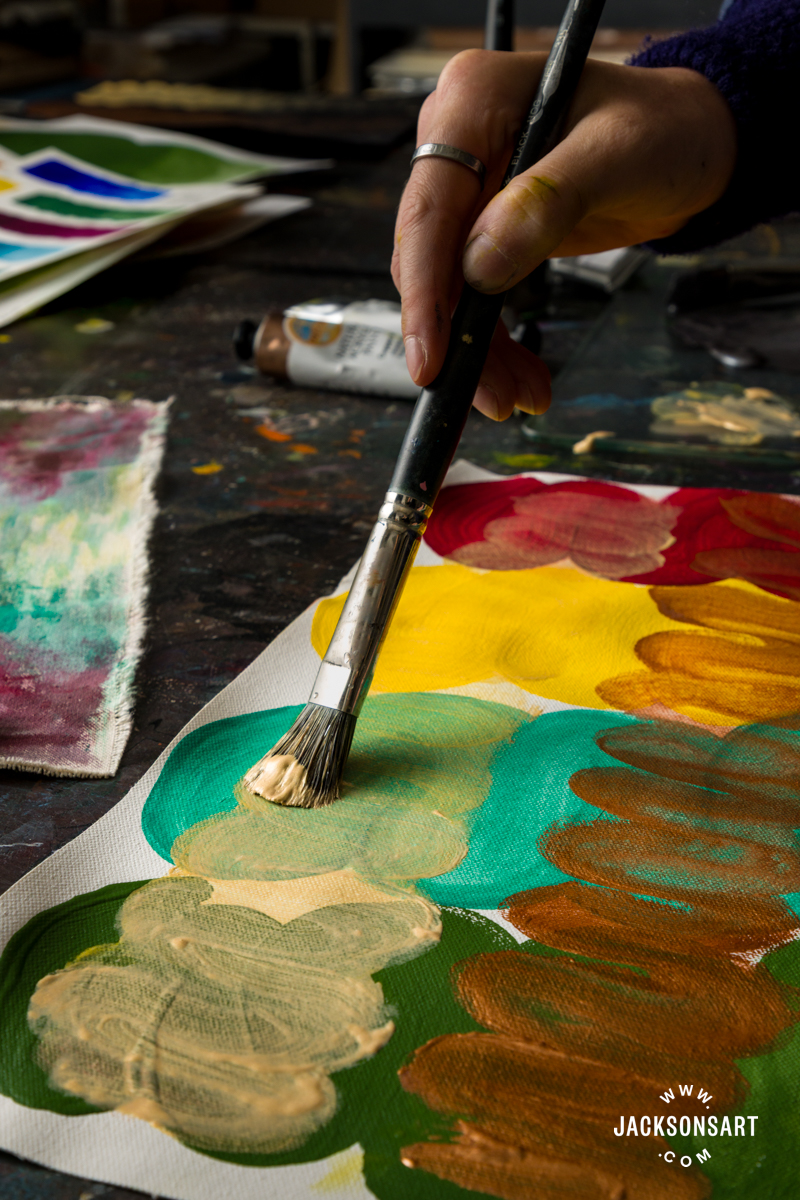
It’s well known that specific pigments can be harmful to artists if handled carelessly, such as cadmium and cobalt colours. Although these pigments don’t pose a significant health risk when used properly – by reducing skin contact, proper ventilation, and avoiding inhalation or ingestion – it can also be liberating to use colours that are guaranteed to be completely non-toxic. The Natural Earth Paint company takes care not to use any potentially harmful pigments in their paints, which is one of the key reasons why they are safe for kids to use.
Without the components of VOC fumes, petroleum, microplastics, and toxic pigments, the Acrylik Paints are formulated completely differently from traditional acrylics. They have been designed to mimic their qualities, but not their ingredients. Understandably, the specific materials in the paints are not publicly available since they are in the process of patenting them. They confirm that they use a plant-based resin as a binder, and that each paint is pH neutral, therefore removing the need for added pH stabilisers. The Natural Earth Paint team has carried out tests for durability and ensure their paints are archival. The paints are lightfast and resistant to UV damage and yellowing.
Properties of the Natural Earth Paint Acrylik Paints
The Natural Earth Paint Acrylik Paints are available in 59 ml tubes, with small screw top lids. Each paint has an individual faint smell similar to typical acrylic paints, varying slightly because of the different pigments. The finish of each paint I tested varied from matt to satin, which unfortunately isn’t individually detailed on the tubes or listed online. The consistency of each paint also varies, with some feeling much more slick than others to handle. The opacity and lightfastness ratings are printed on their new labels and online on the Natural Earth Paint and Jackson’s Art websites.
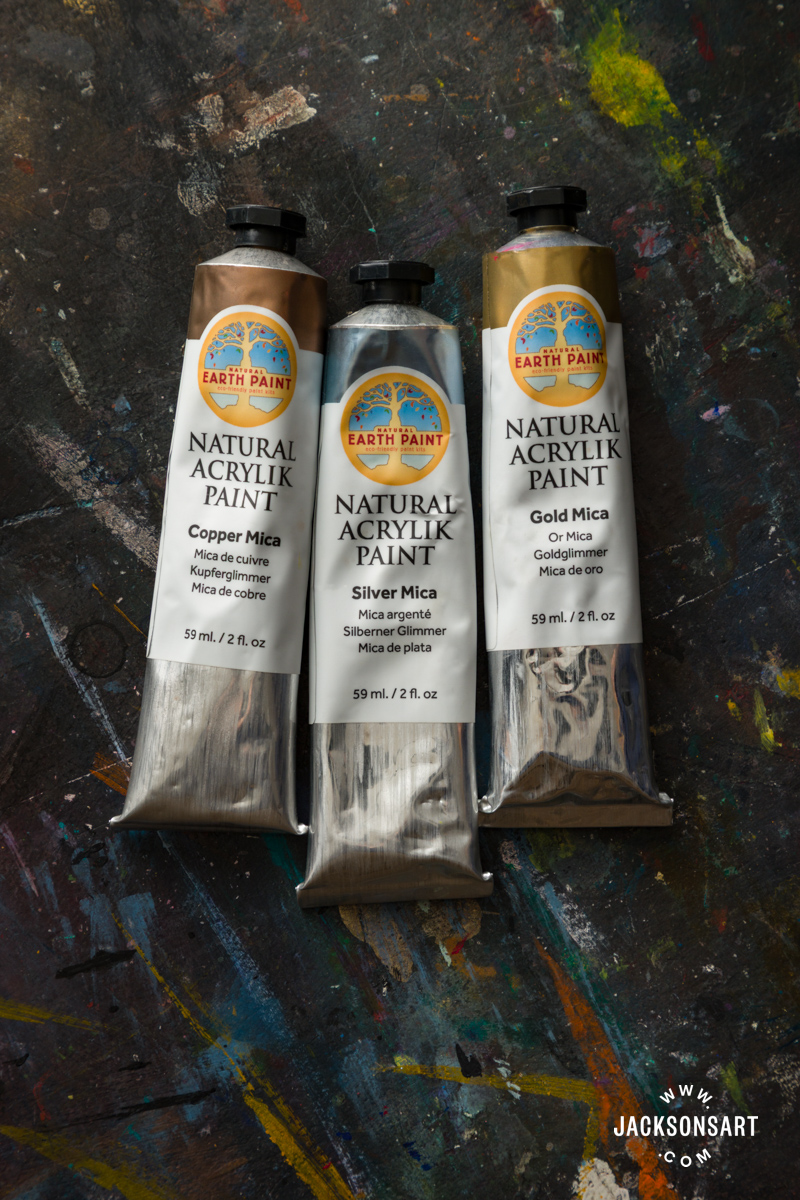
Each of the tubes also states ‘conforms to ASTM D4236’ next to each pigment number. This is a required testing procedure for all American art supplies from the American Society for Testing and Materials. It simply assures the user that any hazards are labelled and have been identified by a toxicologist. In this case, the Acrylik paints have no hazard or warning labels.
Swatching the Colours
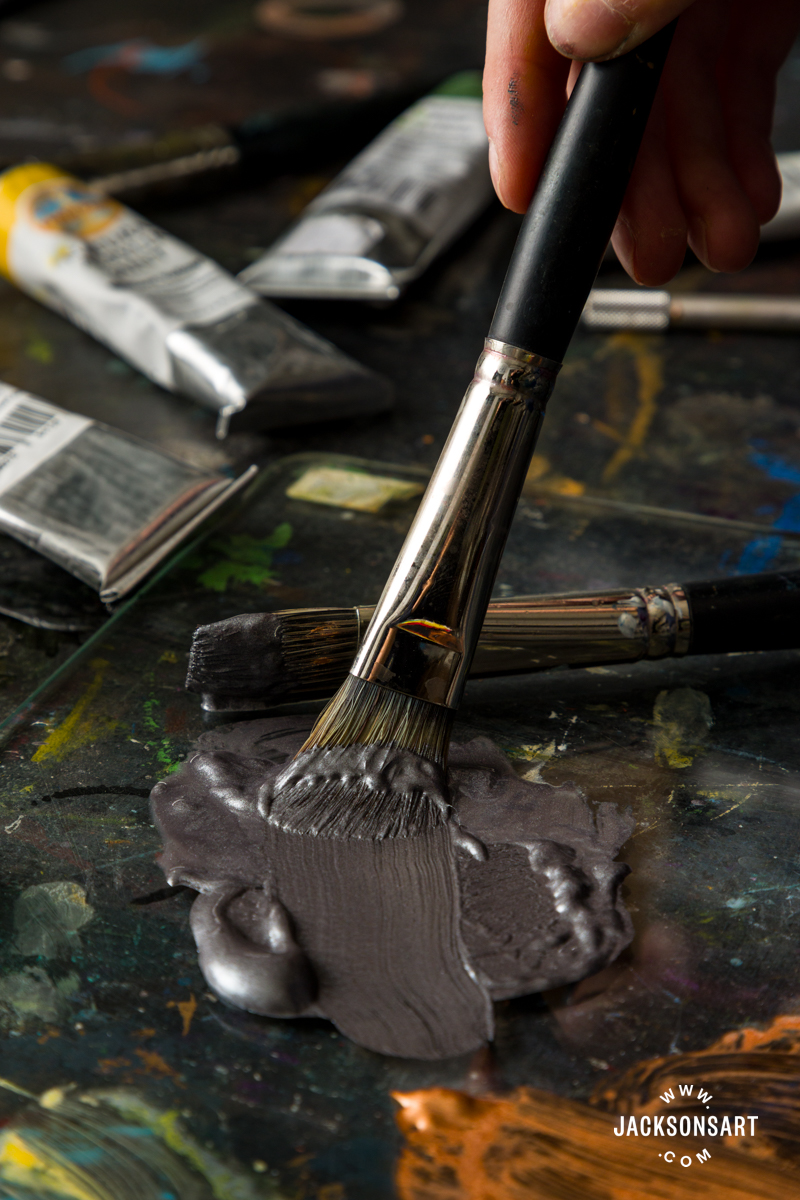
Emerald Green
Pigment: PG17 (Chrome Oxide Green)
Opacity: Opaque
Lightfastness: Excellent
Emerald Green is a warm, opaque moss colour – not quite an Emerald as the title states. The single pigment Chrome Oxide Green is commonly used as the title for paints with the same pigment by other brands. This dull, earthy green is a synthetic colour, developed from the element Chromium, but is also found in nature in the mineral Eskolaite. This green is used widely for camouflage on military equipment, and is brilliant for painting foliage and underpaintings for portraiture alike. It has a very high tinting strength, so it should be used carefully to not overwhelm other colours. It dries slightly darker than it initially appears from the tube, and dries very quickly when dispersed thinly with water, so it was the hardest to apply evenly in a wash.
French Turquoise
Pigment: PW6, PB29, PG7 (Unbleached Titanium, Ultramarine Blue, Phthalocyanine Green)
Opacity: Semi-Transparent
Lightfastness: Excellent
French Turquoise is bright and fresh, like the Mediterranean Sea. This mixed pigment paint combines the deep blue undertones of Phthalocyanine Green with the vibrancy of Ultramarine Blue, muted by the off-white parchment colour of Unbleached Titanium. The transparency of this paint would be lovely for glazing vivid skies and seas. It’s also the only colour that dried matt, with a rough texture to the touch. Handling-wise, it was also the oiliest straight out of the tube, and was impossible to apply without distinctive brushmarks. This could add textural interest to a painting that may otherwise be too flat.
Magenta
Pigment: PR122 (Quinacridone Magenta)
Opacity: Semi-Transparent
Lightfastness: Excellent
Magenta is a deep violet red that disperses into more of a red-pink when diluted. This Natural Earth Paint colour is particularly deep and is more difficult to disperse lightly, and doesn’t reveal the vivid pink that is typical in magenta paints. Regardless, it is a beautiful colour, and would be brilliant for mixing warm browns and deep purples, botanical painting, and painting luxurious fabrics. This colour also dries slightly darker than it initially appears from the tube. Due to the high pigment quantity paired with the slick consistency, it required a lot of water to dilute it into a wash.
Brilliant Yellow
Pigment: PY151 (Benzimidazolone Yellow)
Opacity: Opaque
Lightfastness: Excellent
Brilliant Yellow is a bright primary yellow, perfect for mixing clean oranges and greens, and lovely greys combined with purples. The pigment Benzimidazolone Yellow was released in the 1960s, with greater lightfastness and vibrancy than some traditional yellows. This is another slick-feeling paint, with a high pigment load. From my swatches, I felt that Brilliant Yellow dried the most evenly, and was the easiest to disperse brushmarks in.
Mixing the Acrylik Paints Together
Next, I used my four Acrylik Paints to mix an example palette, combining each of the colours in turn. Despite their different finishes and consistencies, my mixed colours all combined easily and evenly. My favourite swatches were the rich orange from combining Magenta and Brilliant Yellow, and the aubergine purple from combining French Turquoise and Magenta.
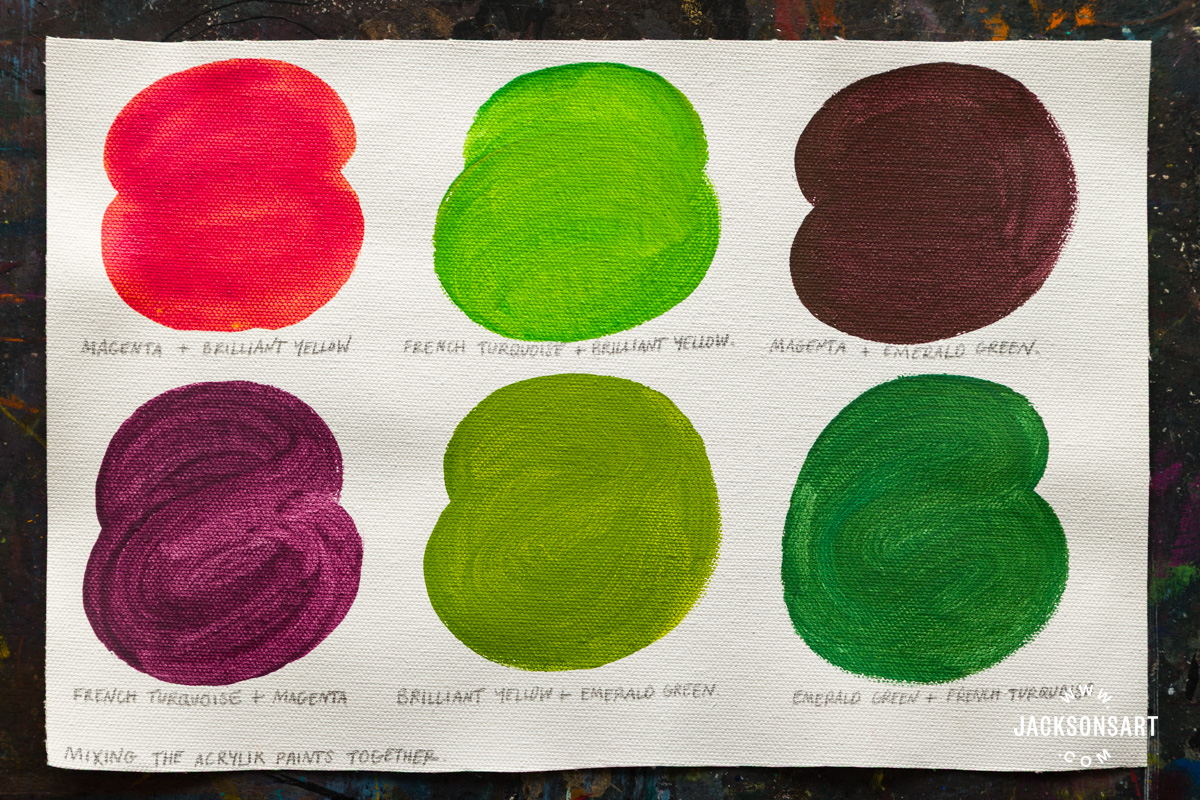
Next, I wanted to disperse my four favourite colours from the previous sheet with water, to see how the mixed pigments appeared when applied thinly. As you can see, the thin areas of paint have lovely luminosity from the white showing through, and I didn’t notice any irregularities in the paint. If you like to work in washes or glazes with acrylic paints, the Acrylik Paints will perform just as well.
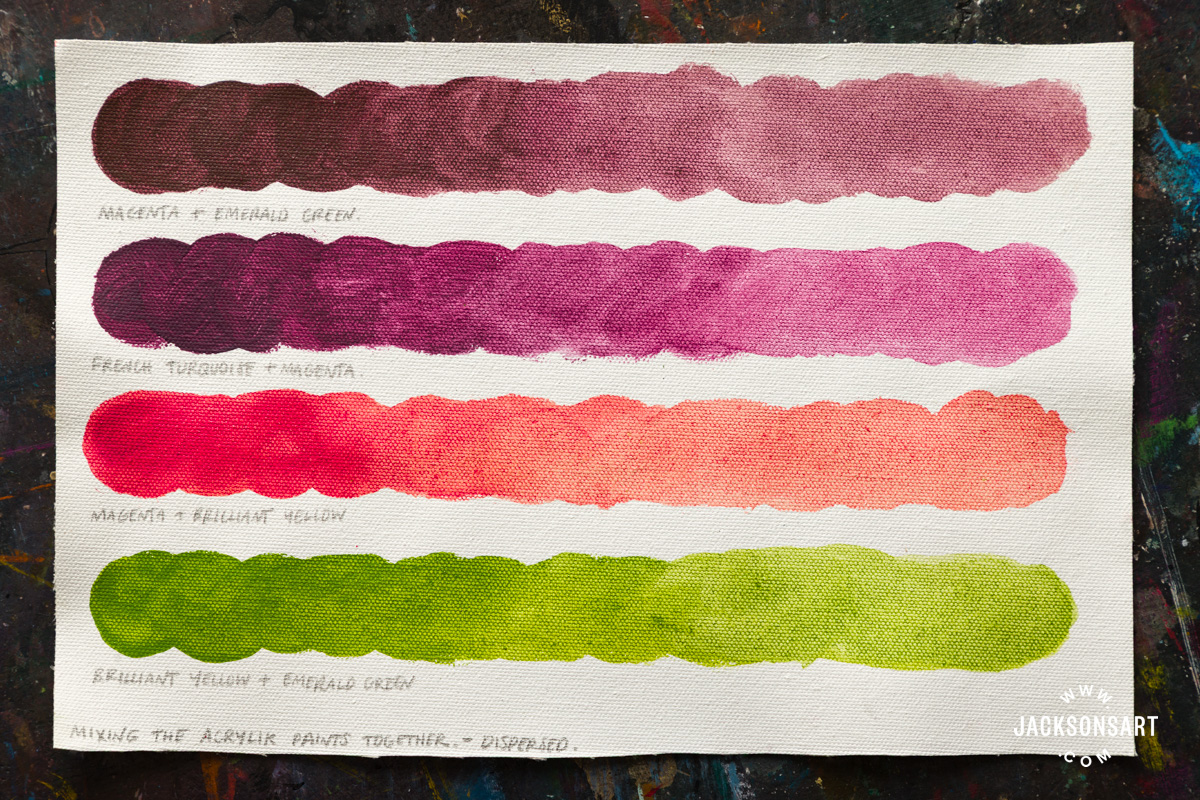
Mixing the Natural Earth Paint Acrylik Paints with Other Acrylic Paints
One of the assets of the Natural Earth Paint Acrylik Paints is that they can be used as normal with other acrylic paints. This means that if you’d like to transition your paint collection towards being more environmentally friendly and health-conscious, you can swap out individual paint colours as they run out. For the following swatches, I combined my four Acrylik Paints with two Jackson’s Professional Acrylic Paints: Yellow Ochre and Ultramarine Blue.
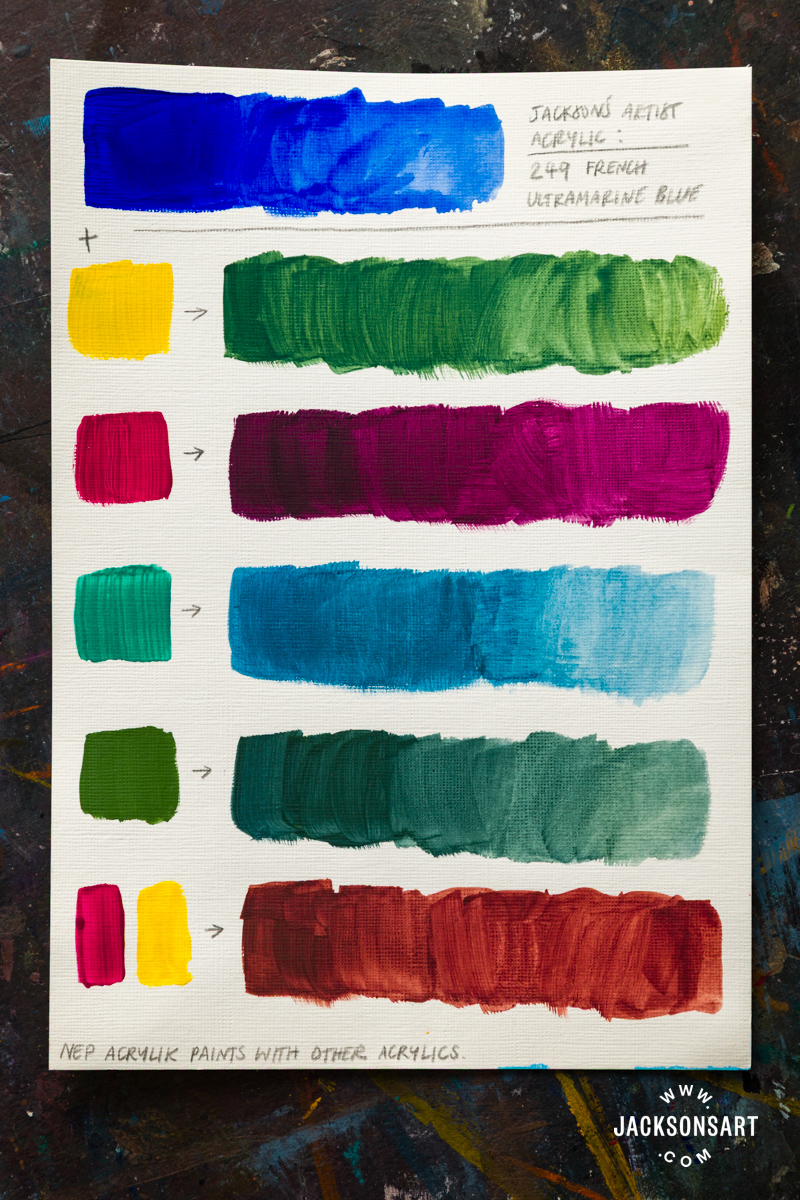
Since both paints are formulated differently, I was worried that my mixtures would be irregular. This wasn’t the case at all, and I found the colours exceptionally easy to mix without either type of paint overwhelming the other. The Ultramarine Blue created a warm jewel-toned palette with my Acrylik Paints. I can imagine this as a cosy palette for painting interiors. The Yellow Ochre mixtures pulled my Acrylik Paints into a desert landscape palette, feeling perfect for painting red rocks and hardy trees.
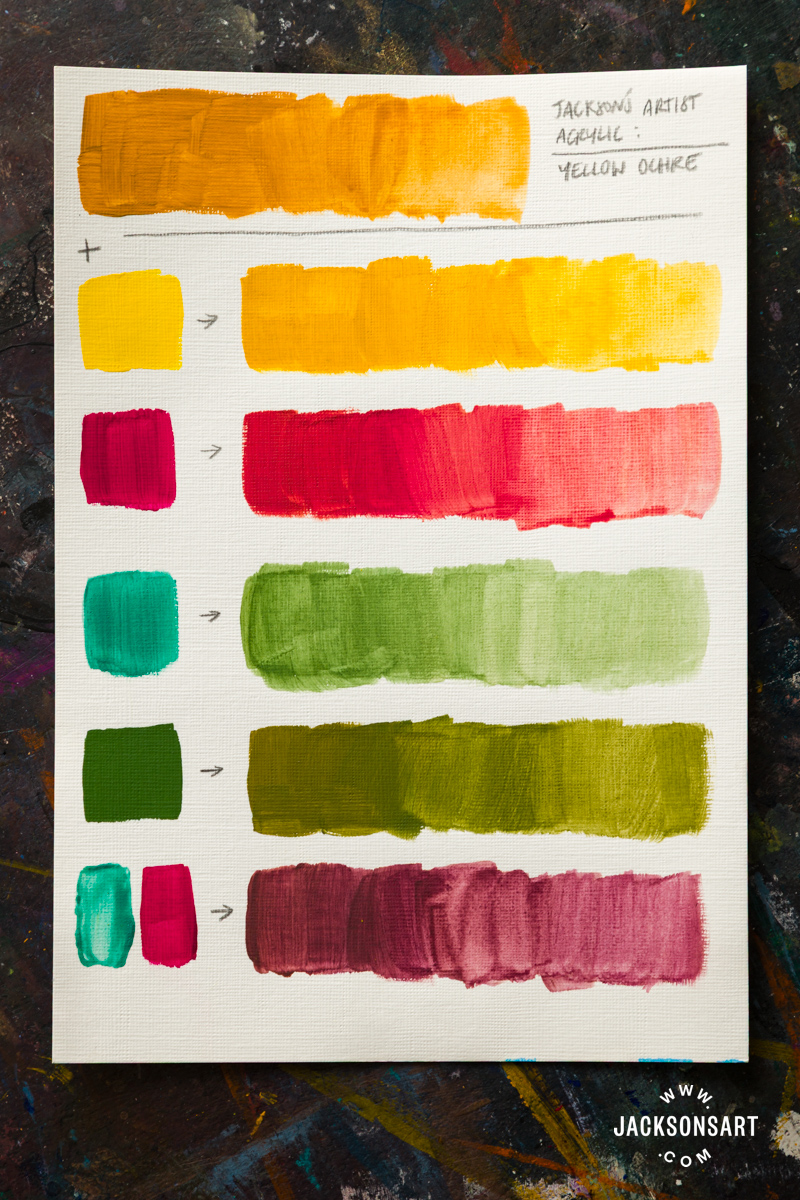
Swatching the Metallic Colours
There are three metallic Acrylik Paints in the Natural Earth Paint range – Gold Mica, Silver Mica, and Copper Mica. Each of these metallic colours contains Mica (PW20), which refers to a group of 37 different minerals that all have reflective qualities. These exist in a variety of different colours, so the pigment PW20 refers to an all-encompassing range of minerals ground into incredibly fine powders. They are non-soluble, so they won’t dull with UV exposure, and don’t contain plastic glitters like some other metallic paints. Due to this, they aren’t as reflective or bright as paints from some other brands, but have a more muted natural quality. This makes them a brilliant choice if unnatural sparkle or intense metallic colours feel too strong for your work. Natural Earth Paint guarantees that the Mica they use is ethically and sustainably sourced from Georgia, USA.
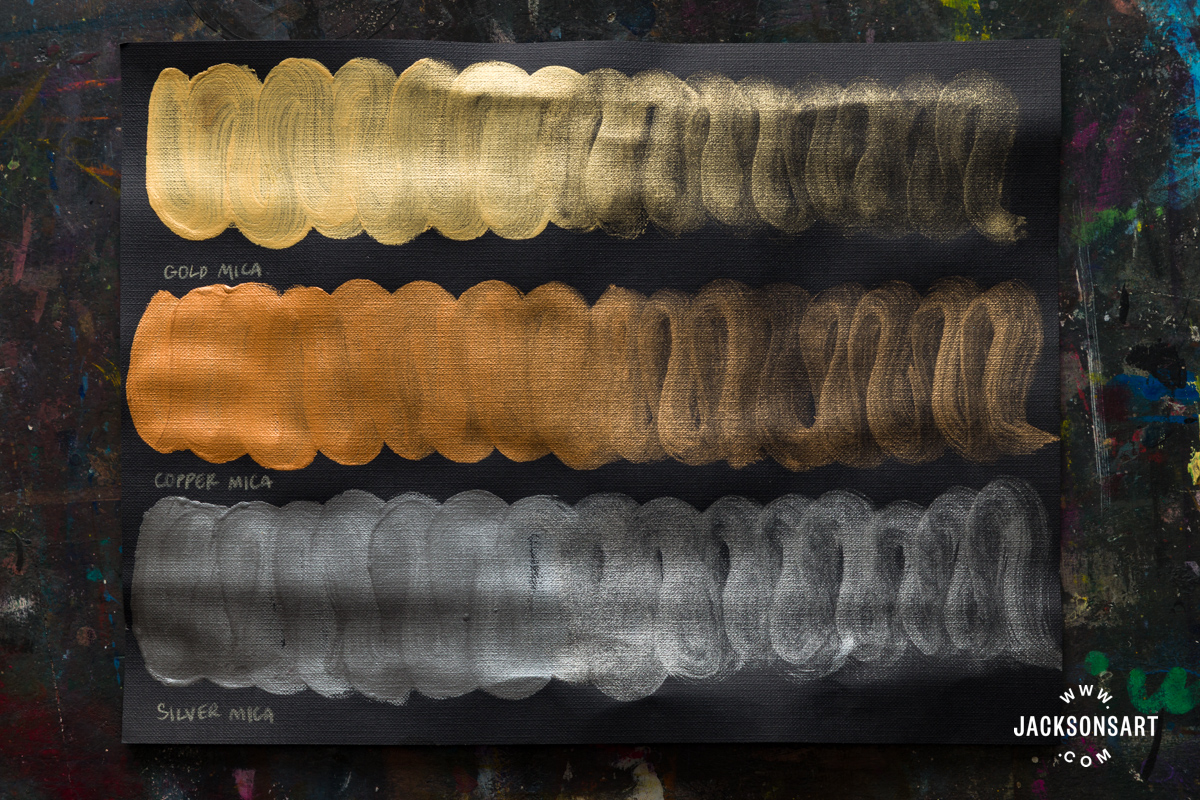
Gold Mica
Pigment: PW20 (Mica)
Opacity: Semi-Transparent
Lightfastness: Excellent
Gold Mica has a cool honey hue, and is the only tube of the three metallic colours to be labelled as semi-transparent. You could easily add an extra layer to make the finish completely opaque. Often I think that metallic or shimmer colours appear better when applied on black paper, but for this colour, I think it looks best on white. It has an inviting warm glow that is pale on the black.
Silver Mica
Pigment: PW20 (Mica)
Opacity: Opaque
Lightfastness: Excellent
Silver Mica is a dark silver that would be perfect for picking out calligraphic details or reflective highlights on a stormy sea. On the white paper it looks especially dark and appears like a charcoal grey when not catching the light. As I dispersed the colour on white paper, I noticed that it took on a slightly warmer hue the more diluted it was. It would be interesting to apply this paint as if it were a dark graphite pencil, since it has a similar sheen and tone.
Copper Mica
Pigment: PW20 (Mica)
Opacity: Opaque
Lightfastness: Excellent
Copper Mica is a dark amber colour when turned to the shade, and brightens into a glowing copper when it catches the light. This Mica colour has the greatest shift in hue depending on the lighting conditions. This would be excellent for picking out bronze details and glowing flames.
Mixing the Metallic Acrylik Paints with Other Paints
I tested mixing the metallic Acrylik Paints with three acrylic paints, to see how they performed, and to check if there were any handling or mixing issues from combining the Mica pigments. The company advises that the metallic Acrylik Paints shouldn’t be mixed with opaque colours since their subtle reflective quality would be overwhelmed by the pigment and obscured. I worked with a semi-opaque colour – Cobalt Green, a semi-transparent colour – Naphthol Carmine, and a transparent colour – Process Yellow.
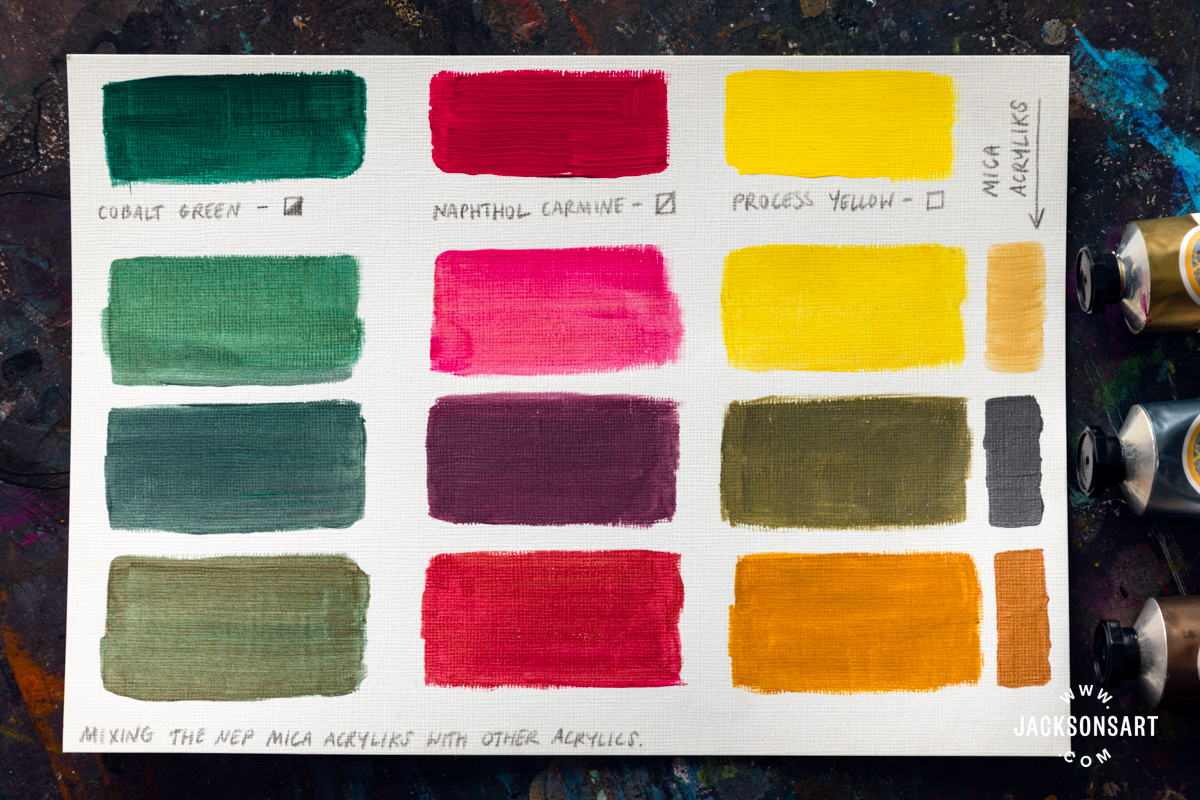
Again, the Acrylik Paints mixed seamlessly with the other acrylics, and produced some really beautiful results. I especially love the colours produced with Naphthol Red, since each mix dramatically affected the resulting colour. All of my swatches have a light sheen and some visible reflective specks. This would be a perfect way to incorporate metallic effects in your paintings, without being overwhelmed by them.
Finally, I layered the metallic Acrylik paints over the four other colours to see how they appeared when layered. I found that the paints adhered differently to the colours below, depending on how glossy or matt the finish of each paint was.
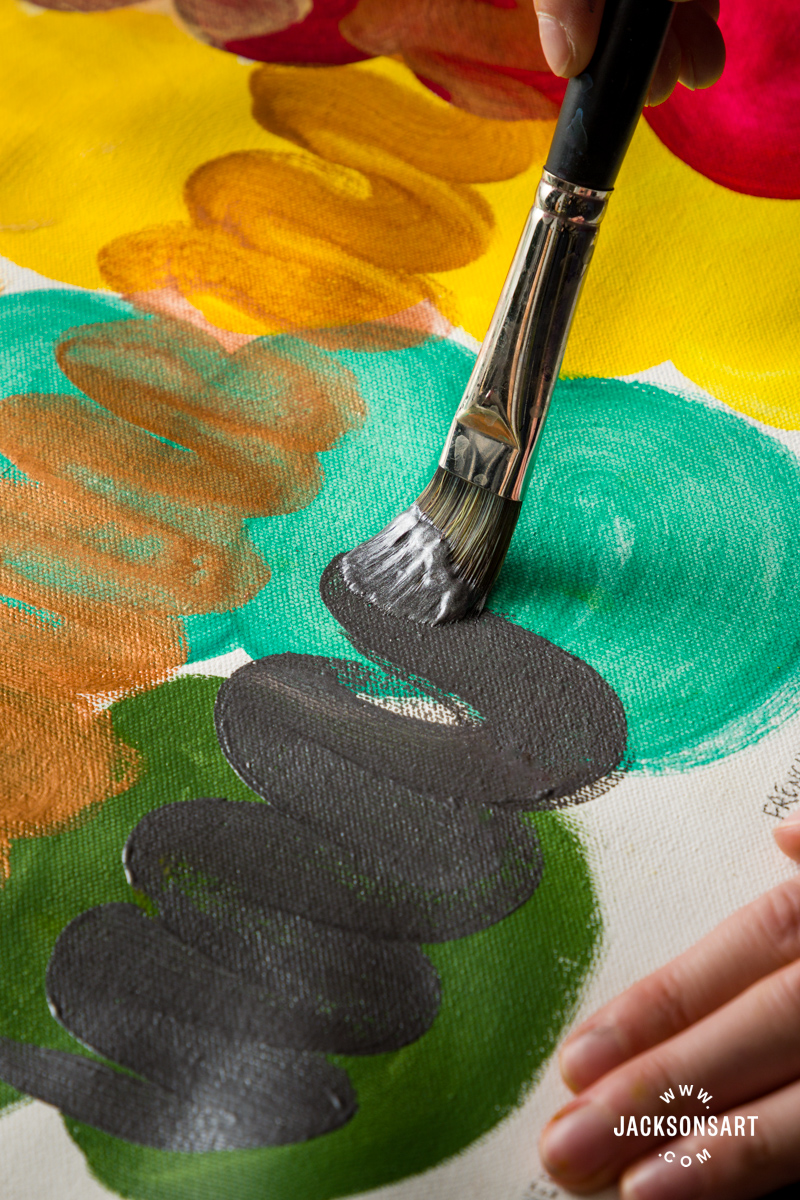
Using the Acrylik Paints on Fabric
Natural Earth Paint states that the Acrylik Paint range can also be used as permanent, sweat-proof fabric paints. This could be interesting information if you’re considering making wearable artworks, or are experimenting with painting on unconventional materials, or fabrics for performance.
They advise that paintings on clothing should be allowed to dry for at least 24 hours before washing or wearing, and should only be washed cold by hand or on a delicate cycle. To test this, I used some of the Acrylik Paints on a piece of raw cotton duck canvas, using all of the Acrylik colours. I found that they dispersed decently well on the surface, and I was able to vary different textural effects like washing, dry brushing, and dabbing with them.
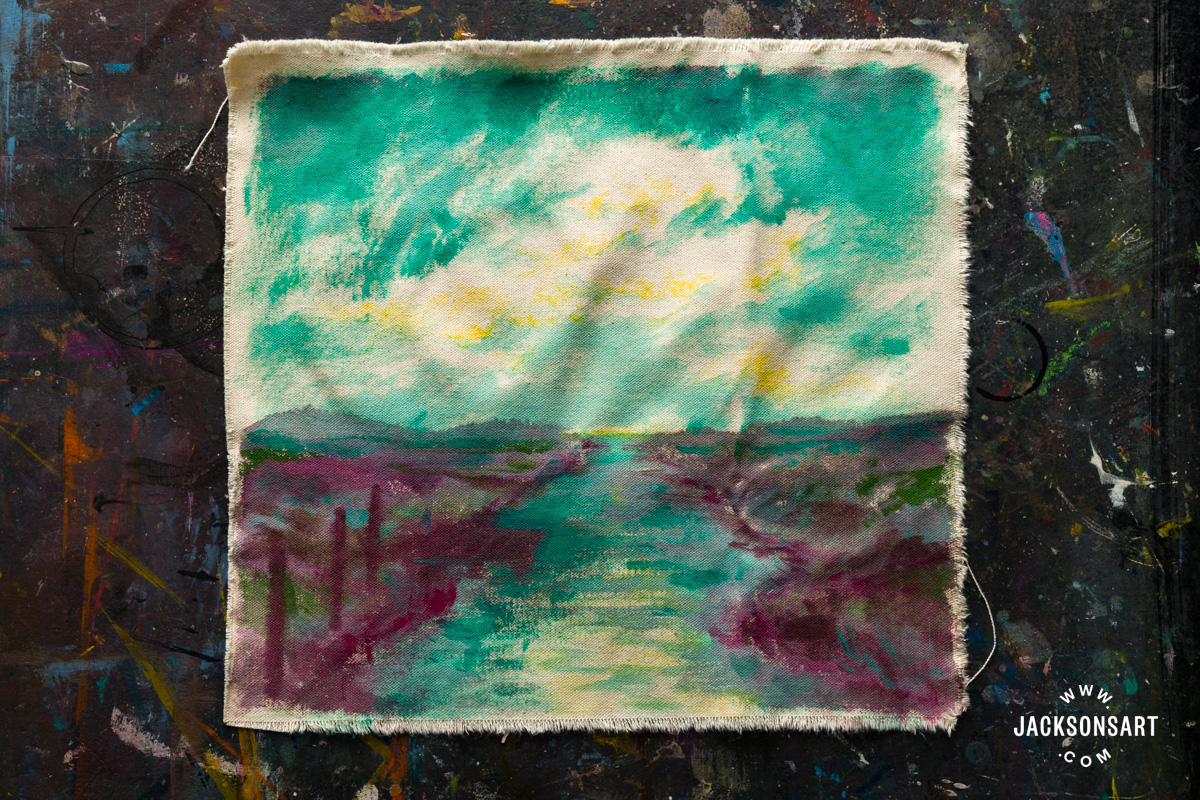
It’s not often that artists have the opportunity to work with paints that have been formulated outside convention. The Natural Earth Paint Acrylik Paint range sets itself apart through its innovation, giving the artist absolute assurance that the environment, the longevity of their work, and their health are safe by using them. It’s important that products for children are completely safe for use, and it’s admirable that this brand goes above and beyond to reassure parents. I would recommend these paints to all artists with ecological concerns, those with allergies to traditional acrylics, and children.
Further Reading
Testing Natural Earth Paint’s Natural Varnish on Oil and Acrylic
Acrylic Painting, Microplastics, and the Environment
Cadmium and Cobalt Pigments and the Risks (Or Not)
Art Terms Explained: Acrylic Painting
Shop Natural Earth Paint on jacksonsart.com
The post Testing Natural Earth Paint’s Acrylik Range appeared first on Jackson's Art Blog.
Trending Products

